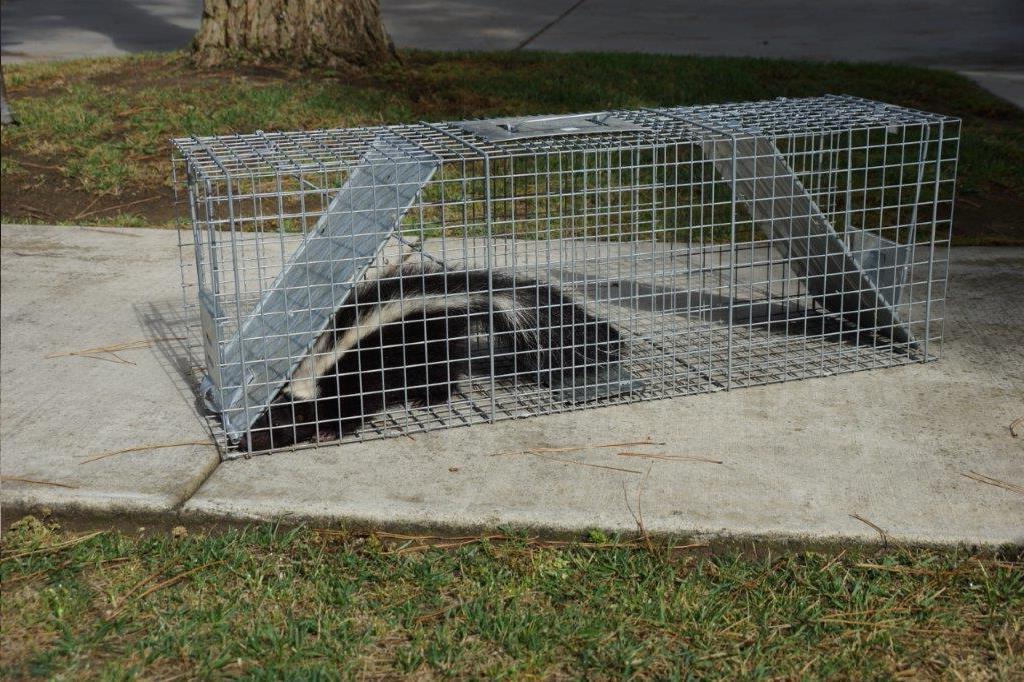
If you have never come across skunks before, it is easy to think that they are rodents. However, on seeing these furry animals, you will know for a fact that they are not. Skunks are nocturnal mammals that have jet black fur that is striped or spotted with white hair. There are different ways the white and black stripes may be arranged but the colors never change.
Biological comparison
Biologically, every living thing is classified according to the Linnaeus classification system which consists of the kingdom, phylum, class, order, family, genus, and species. Rodents (order rodentia) are a group of gnawing mammals with a chisel-shaped edge and continuously growing single pair of incisors. The order consists of rats, mice, chipmunks, rabbits, hamsters, beavers, and so on.
Skunks, however, belong to a different order and family at the taxonomy table. They belong in the order carnivora and family mephitidae. This is a totally different family and order from rodents. Skunks are therefore not rodents.
Although most members of the rodent family weigh and have similar body features as skunks, there are still lots of differences between them. In appearance, skunks are usually black with white stripes. Their unique 5-toe foot has a set of long claws to enable them to dig easily through the mud when searching for food.
There are twelve species of skunks, four of which are the most abundant. The first is the striped skunk (Mephitis mephitis) and they are most commonly found in the suburbs. They have thick black fur with v-shaped white stripes on their backs and on their snouts. They are usually about the size of a medium sized cat.
The hooded skunks (Mephitis macroura) resemble striped skunks and are sometimes mistaken for them. However, they have longer tails and softer fur. They can also be distinguished by two thin white stripes that run down their backs and their white tails.
The hog-nosed skunks are relatively larger than the hooded and striped skunks and can weigh anywhere from 2.5 to 6 pounds. They are distinguished by a single large white stripe that runs all the way from their noses to their tails. They are rarely found around homes but prefer rocky regions. Many of these species can be found around Texas. They are excellent diggers.
The last popular skunk species is the spotted skunk. As the name implies, they have several broken white stripes resembling spots across their backs. There are two varieties of this species. The eastern and western varieties. The eastern spotted skunks are excellent climbers and have relatively shorter tails than the western spotted skunks. This species of skunk is also relatively smaller than other species, weighing around 14 ounces to 2 pounds.
Behavioral comparison
Many species in the rodent family will hide or camouflage themselves to get away from predators. Members of the skunk family, however, have a defense mechanism in place to ward off intruders. They release a stinky spray from the glands located underneath their tails.
Unlike rodents that live in family units until the young are old enough to be on their own, skunks are mostly solitary animals. They only give care to young ones for a few weeks and then go back to being solitary.
Feeding habits
Although some members of the rodent family are omnivores, the majority of the family are herbivores relying on trees, leaves, bark, and stems for survival. However, all skunk species are omnivores meaning that they can feed on almost anything from small animals, such as rodents, to barks and leaves. This makes skunks best adapted to almost any kind of habitat.
In conclusion, there are many distinct differences between skunks and rodents. A skunk is therefore not a rodent.
Go back to the Hillsborough wildlife removal home page.